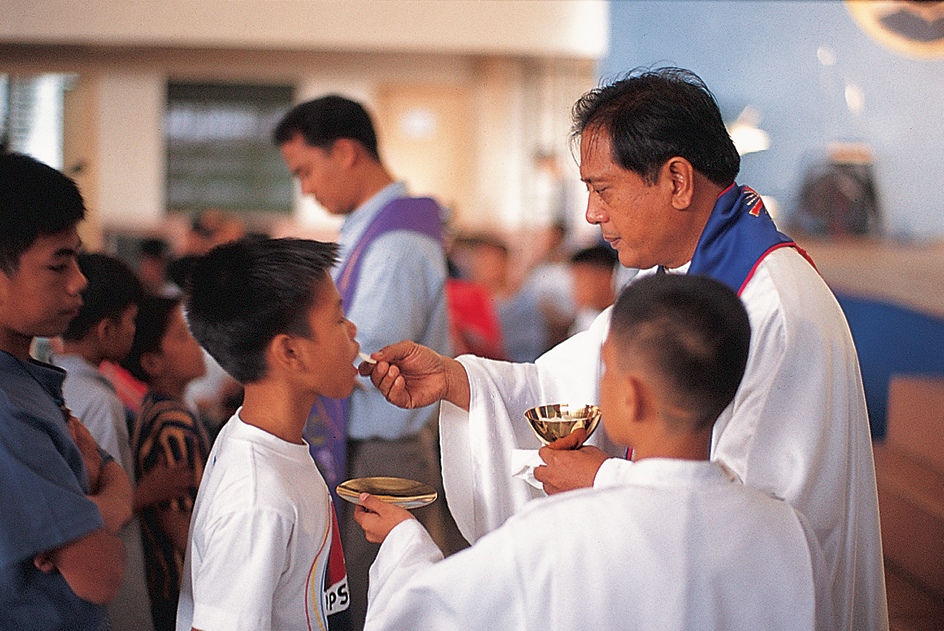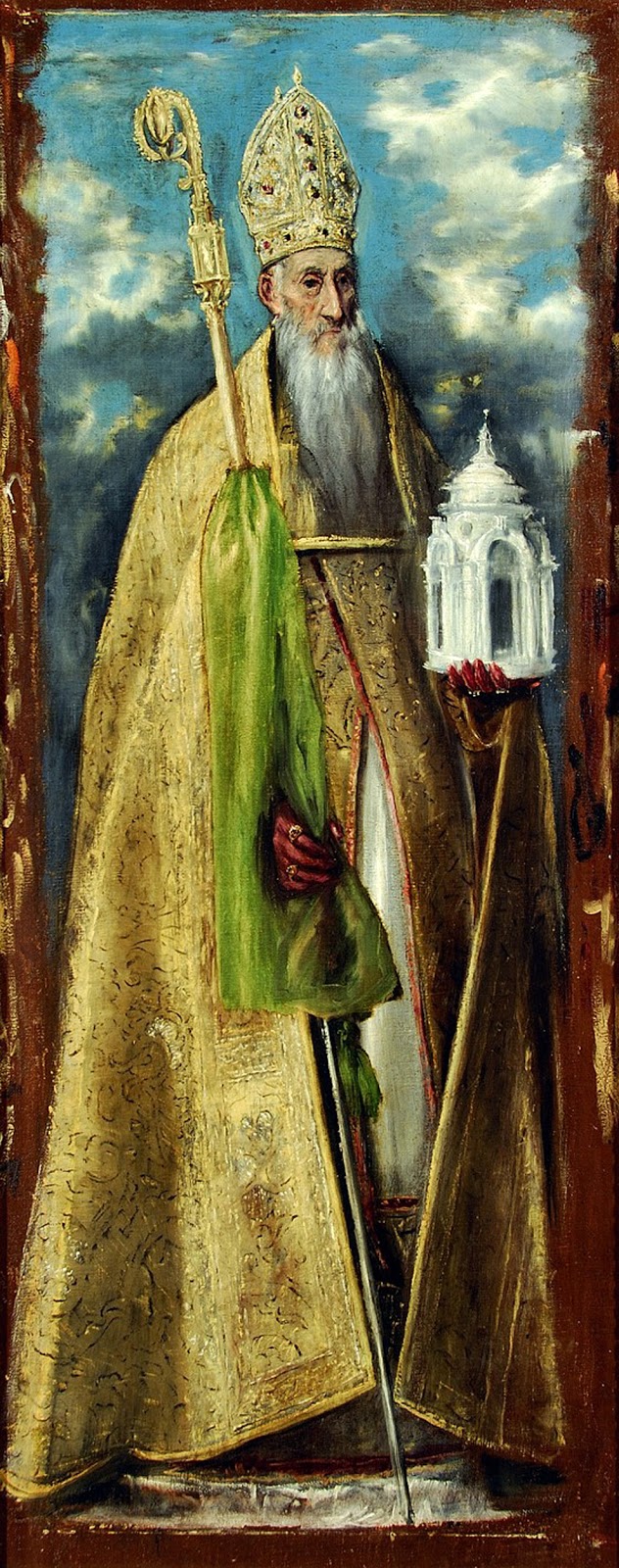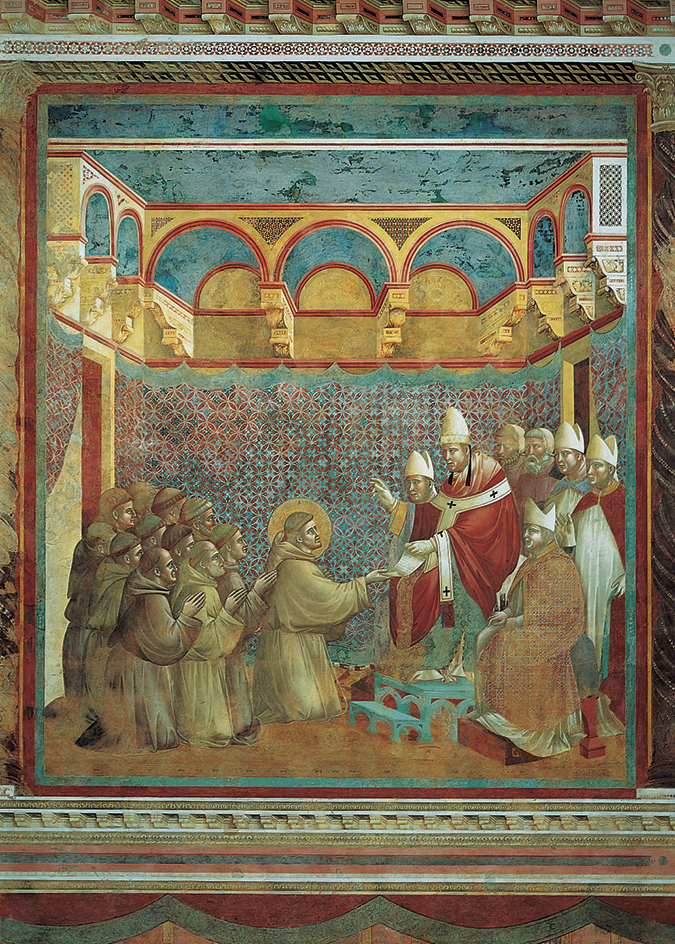Religious life is a term for a life bound by vows and may also include service to others. Religious is a name for monks and nuns dedicated to a life of prayer and for sisters, priests, and brothers actively engaged in teaching and nursing.

Most followers of the religious life are members of organizations called orders. The members follow a rule (program of life). The rule may require that they live cloistered lives of prayer. Such religious are known as contemplative religious. Some orders send members out to do pastoral, educational, missionary, medical, or social work. These people are called active religious. Other orders follow a “mixed life” that combines community prayer with external work.
Most members of orders live together in a community, or congregation, which trains them. After admission, an aspirant (candidate) serves as a postulant for several months. If members of the community approve, the individual is admitted as a novice for an additional year or more of training. Profession, the taking of vows, marks the entry of the new religious into full membership. Most orders have temporary profession for several years, followed by life, or solemn, final profession. After profession, some religious continue to live in a community. Others live alone or in small groups.
Religious life in early Christianity.
Some early Christian men and women chose to remain unmarried, or, if widowed, not to remarry, in order to serve God and their fellow Christians. In the late A.D. 200’s, Christianity became socially acceptable in Roman society. At this time, many Christians chose to withdraw from their families to devote themselves to prayer and the recitation of Scripture. These people lived in seclusion in the deserts of Egypt, in the wilderness of Syria and Palestine, in city monasteries, or in the forests of Europe. Some lived as hermits and some lived in groups. Eventually, all came to be called monks or nuns.
In the early 300’s, Saint Pachomius, a monk from Egypt, organized the first religious community in southern Egypt. He wrote a rule for monks who wished to live together under a superior. Later in the 300’s, Saint Basil of Caesaria adopted the rule of Pachomius and made his monasteries in Asia Minor homes of charity. Today, Eastern Orthodox religious still look to the writings of Saint Pachomius and Saint Basil for inspiration.
In the mid-300’s, Saint Athanasius introduced Eastern Christian monasticism to Western Christianity through his writings on the life of Saint Anthony of Thebes, a hermit. This model influenced the entire Christian community of Athanasius’ time and today remains the classic model.
Religious life in the Middle Ages.
In the 500’s, Saint Benedict drew upon the writings of Saint Basil and of John Cassian, a monk, when he wrote the Benedictine rule. This document included instructions for the formation, government, and administration of a monastery and for the daily lives of its monks.
From the 300’s to the 900’s, the Benedictines provided missionaries to such remote areas as Germany and northern England. The Benedictine missionaries provided the liturgical and devotional standards of European Christendom. In many countries, they were the only people who could read and write, and so they became the record keepers in these societies.
In the late 1000’s and early 1100’s, several new orders were formed that placed more emphasis on solitude than had been customary in large Benedictine abbeys. These new orders included the Cistercians and the Carthusians. Men who followed the rule of Saint Augustine << AW guh `steen` or aw GUHS tihn >> became prominent teachers at universities and cathedral schools throughout Europe.

During the 1200’s, the growth of the cities produced often violent social change. Society became more divided between the poor and the wealthy. New orders of religions sprang up to take the Christian message to poor people and to heretics. Prominent orders that developed during this time were the Franciscans and the Dominicans.
The Franciscans were founded by Saint Francis of Assisi. Francis left a well-to-do merchant family to embrace a life of poverty. He attracted a group of followers, who eventually became the Franciscans. The Franciscans vowed poverty, chastity, and obedience. Their poverty originally forbade them from owning anything, either as individuals or as a group. The Dominicans were founded by Saint Dominic to preach doctrine to those who had fallen under the influence of heretical ideas. Both the Franciscan and the Dominican orders soon emphasized study in preparation for preaching. Many members of these orders became professors at universities across Europe.

Religious life in the 1500’s and 1600’s.
During the Protestant Reformation of the 1500’s, Protestant leaders did not encourage religious life under vows. Following the Reformation, several new Roman Catholic orders were founded with the goal of winning Protestants back to the church. The Jesuits, founded by Saint Ignatius Loyola, trained their men in theology and secular subjects. The Discalced Carmelites, founded in Spain by Saint Teresa of Avila, stimulated a widespread spiritual renaissance. Saint Angela Merici and her companions established a fellowship of teachers that later became the Ursuline order. In 1610, Saint Francis de Sales and Saint Jane Frances de Chantal founded the Visitation Nuns, an order of nuns devoted to visiting the sick in their homes. The Trappists, a strict branch of the Cistercians, were formed in 1664.
Religious life in the 1700’s and 1800’s.
The Enlightenment and the French Revolution led to a period in which governments dissolved many orders (see Enlightenment ; French Revolution ). Some governments did tolerate those religious who cared for the sick or who taught. A revival of religious life began in the 1800’s. The Jesuit order was restored in 1814, and both active and contemplative orders were reestablished throughout Europe.
By the mid-1800’s, several Protestant denominations began to establish religious communities. Communities of deaconesses were organized in Germany to provide Lutheran and Calvinist women with support and discipline in their lives of service. In the Church of England, a group for men was founded in 1842, and another for women in 1845. These were the first such groups formed since the Church of England had closed all monasteries during the Reformation.
Religious life in the 1900’s.
From the early to the mid-1900’s, several new Protestant communities formed throughout the world. Lutheran and Calvinist communities appeared in Germany, France, Africa, and the Scandinavian countries. In the 1940’s, the Taize community of men and the Grandchamp community for women were formed in France under Lutheran and Reformed sponsorship.
Vatican Council II (1962-1965) called on members of monastic and religious orders to rediscover the ideals of their founders. As a result, many active followers of the religious life have discontinued monastic customs that had been introduced into their societies. Monastic orders have, in turn, reexamined regulations that were not originally part of their religious tradition.
The Eastern Orthodox Churches
regard monasticism as an essential feature of their tradition. All Eastern Christian religious look to Saint Basil as their spiritual guide, though they do not have a rule in the same sense as do Western monks and nuns. Several forms of monastic life have developed in Eastern Christianity. The cenobitic follows community life. The idiorrhythmic gives religious the freedom to choose their own life style. Eremetical religious live as hermits.
In the 1900’s, a few active religious associations similar to Western orders began to appear in Eastern churches. The most famous monastic center in the Orthodox world is Mount Athos, a collection of about 20 monasteries of various nationalities located on a rocky peninsula in Greece. As Eastern Christians moved into Europe, North America, Australia, and New Zealand, they established monasteries in these areas.
